
BattleCrypt, originally codenamed Wishard, first ever mockup done in illustrator.
In March, 2015 I was in the process of starting my own software development studio (which has now become Westedge.us!) and leaving my nice, secure job at KPMG behind. I was under a lot of stress and doing more business and architecture work than software development. I had this urge to build something fun with no goals or deadlines just to blow off steam. I had been playing a fair amount of Smash Brothers and read an article about how #IDARB came about (unfortunately I can’t find the original article). It described devs who were tired of pressure and deadlines just hacking ideas together quick-and-dirty to have fun building something. The idea of building some type of arena game with minimal plan sounded really appealing. I sat down and started coding.
I gave the game a codename of “Wishard” – which came from how I imagine Sean Connery pronouncing the word “wizard” – and some basic mechanics evolved. The game would feature blockly little wizards hopping around and firing spells at one another. The spells could be one of four element types: fire, water, poison and electricity. Players could also defend against a single element type by raising a shield of the same type. Gameplay would be about blocking the right type of element while countering with an element your opponents were not shielded against. Players would recharge mana by moving near mana crystals and there would be hazards like lava and water with different effects.
I prototyped this quickly but realized that the design was simply not fun. The controls were complex and confusing and the best strategy was to simply switch element types as rapidly as possible and mash attack while standing on a crystal. I stripped out two elements, leaving Fire and Water as the primary attack types. Shields became capable of blocking any attack but consumed mana at a rapid rate. They also changed the ownership of a blocked spell, making it capable of bouncing back and hitting its owner. Spells also gained a slight “seeking” ability making them more likely to hit. I also had the idea for level hazards that affect a spell’s behavior. I added fire and ice geysers to the game. Spells passing through a geyser of the same element type would be enhanced. Opposing geyser types would destroy the spell.
I also was enjoying experimenting with art. I was working in illustrator, creating tiles as vector art and then building levels from the tiles in Tiled. A little over a month in I had a working prototype of the game using the Tiled levels. The gif below is from an early screen capture of the build (full video here).
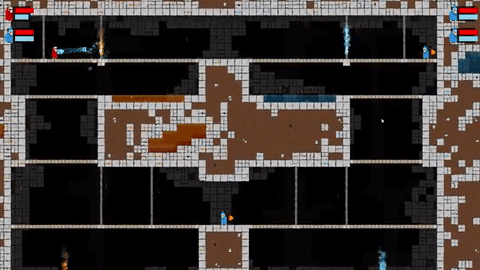
Vector based tiles. Spells react with to hazards based on element type.
Around this time I ran into “programmer’s block.” The game wasn’t very fun in playtesting. I started to hate the art and my ideas weren’t coming together. I knew what I wanted. I wanted accessibility – a game that my kids could pick up and play with simple controls, but experienced players could excel at with deeper strategy and advanced tactics. I wanted art that was unique and professional. I was sick of the volume of “retro indie pixel art” and was exploring vector-based techniques but it just wasn’t working out.
I spent some time hand-drawing art in photoshop with a wacom tablet. I came up with a more cartoony style that my kids liked. But fellow game devs suggested that it just didn’t look professional. My artistic skill was not up to the task. Here’s a shot of the cartoony style I was working on.

One of my first attempts at a more cartoony style.
I made some more attempts but was never happy with my efforts.
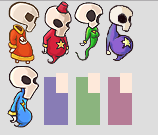
Some cartoony wizard characters that I tried.
Around this time I came up with the game’s real name: BattleCrypt. I kept at the art until I arrived at a style that I didn’t totally hate. But I still wasn’t satisfied with it. Along the way I had added taunt phrases that the characters would say via little speech bubbles based on what was happening in the game. The art evolved into a sort of underground cavern style.
I reached out to a friend who did the very-rough AI on a game jam tribute to Game Grumps I worked on. I offered him a little cash to build an AI framework to power bots. He cranked out code in a single weekend that resulted in bots that were so hard I couldn’t beat them. It was a great start and gave me a good shot of motivation.
I separated the art for the skull and added powerups. When players died their skulls would stick around for a bit and then burst, leaving a powerup behind. I also tried an idea for little crystals that drop from powered up spells and explode in chain reactions. I was still really struggling with both game and artistic design.
The game had lost the fun, build-whatever-you-want vibe that I started with and became real actual work. The only thing keeping me motivated was the fact that my sons and nieces LOVED to play it. My nieces talked all day about playing “the skeleton game” at my house before one visit.
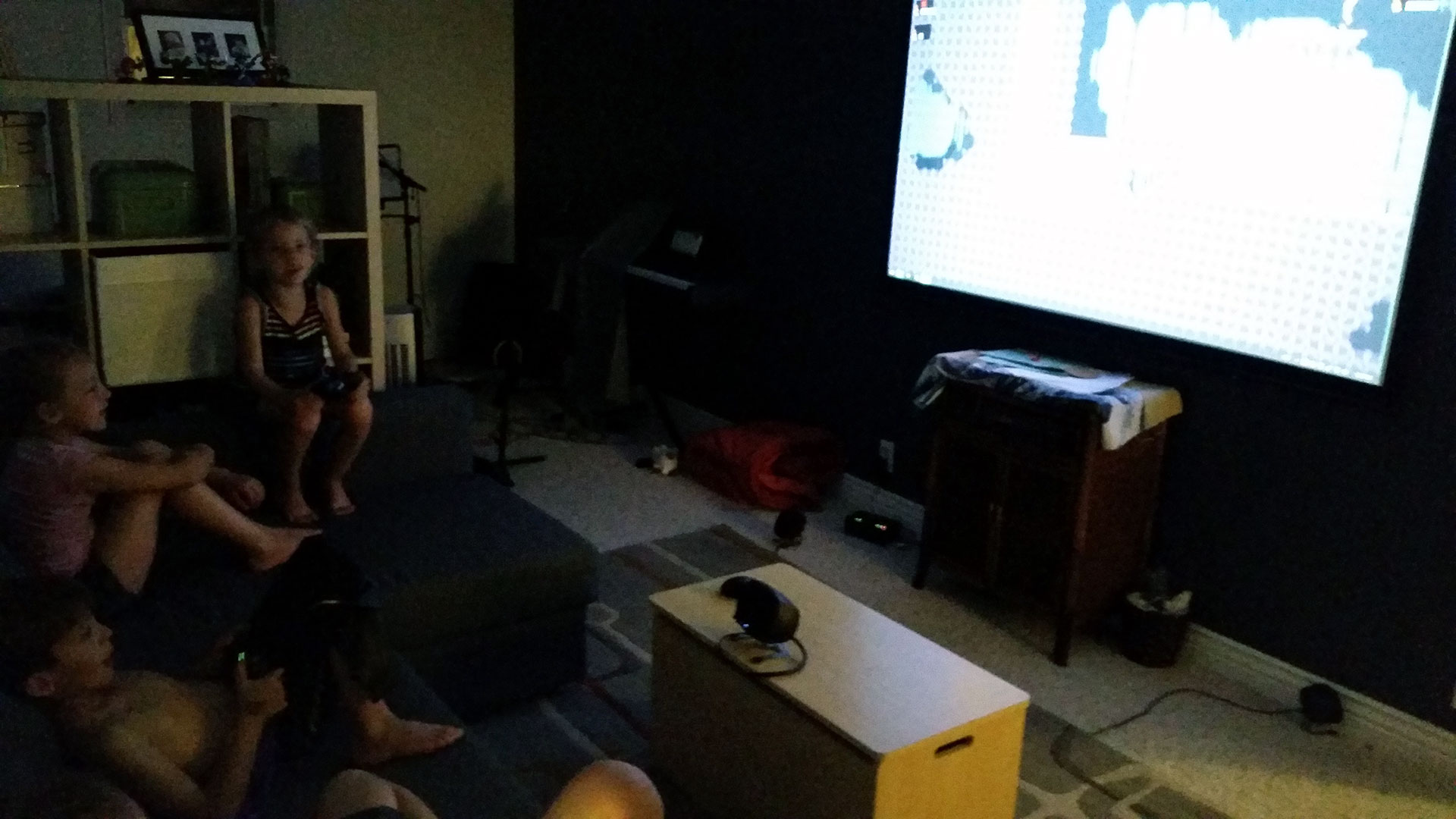
My boys and their cousins play an early build of battle crypt…for hours!
My motivation began to really grind down. I wasn’t happy with the art or gameplay and in the meantime, my real job was getting chaotic. I took a short contract that took me to California to do some architecture planning for an auto company. An important client suddenly closed their doors. The government put a freeze on contract funding which put another contract on delay. I also took a side project helping create the mobile versions of Super Refresh-Men (free on Android and iOS). And I did a little server-side work to support The Incredible Baron. A few months passed and I barely touched Battle Crypt.
But it didn’t leave my mind. I surfed Behance, DeviantArt and OpenGameArt for inspiration when I had time. I reached out to a couple of artists but they were busy. A few weekends, I just played with new tilesets, trying to find a look that I liked. I came up with this:
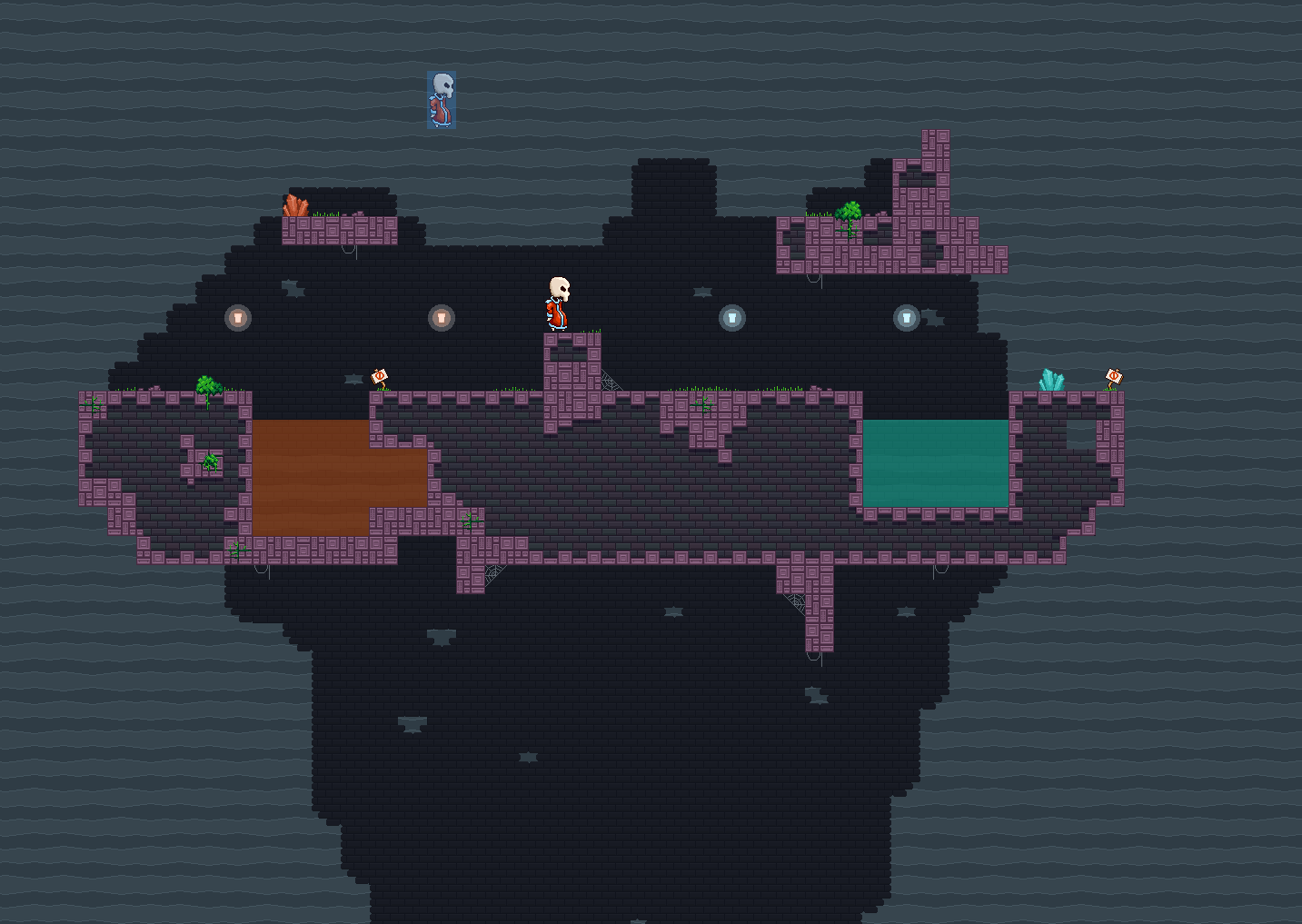
Another tiled test of mediocre art.
And then this:

A sort of jungle-ruins tileset idea.
I also moved all of my tasks and ideas into Trello and started documenting exactly what I wanted to change and do. I put a TON of thought into game design and discussed it constantly with my buddy Vic of FlatRedBall (best 2D indie game engine ever!).
I was finally getting ideas. I had traveled a long way from the fun, casual IDARB-inspired dev session to a game that I had time, money and emotional investment in. The rollercoaster took me up and down as I got excited about ideas but then continually failed to execute on the aesthetics. I tried to hire artists but either got no response or a [figurative] busy signal.
I started watching videos and looking at a lot of art by Konjak*. His amazing characters, tight pixel work and brilliantly-colorful environments constantly inspired me. I started really studying his technique** and trying to create my own worlds with what I learned. I came nowhere near his skill but it did finally take things in a way that I got excited about.
It’s worth mentioning here that one of the things I love about my buddy Vic is that he doesn’t tell me things to make me feel good. If he doesn’t like it, he says so. The most exciting thing about the new art is that it passed the Vic test – he actually liked it and got excited about it. So a good takeaway here is to make the kind of friends that can tell you if something is not good and, even better, tell you why.
So, I’m finally happy with the direction of Battle Crypt. My motivation is back. I have a trello board full of game design improvement ideas and a tileset that has a unique feel and quality execution. Things are still rough around the edges, especially the characters, but it’s moving in the right direction. I’ll wrap up this post with a little preview of the new direction…
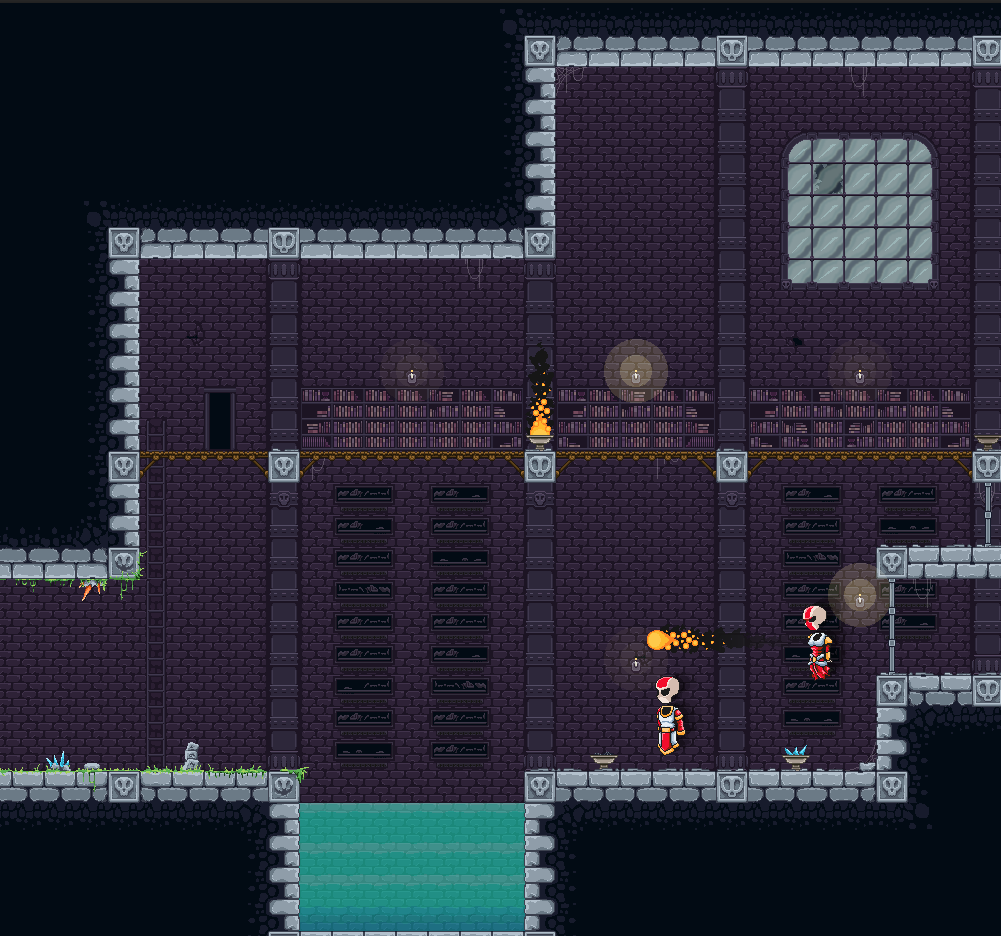
Battle Crypt new art direction.
* I reached out to Konjak on Twitter multiple times. I would love to pay him to do the art for my game but I never got a response. Konjak, if you read this hit me up!
** To be clear, I absolutely have not copied the work of any artist. I was inspired by the way Konjak layers levels and his color palettes. I tried to learn from how his worlds are filled with color and interesting visuals without being busy (still haven’t figured that out!)

